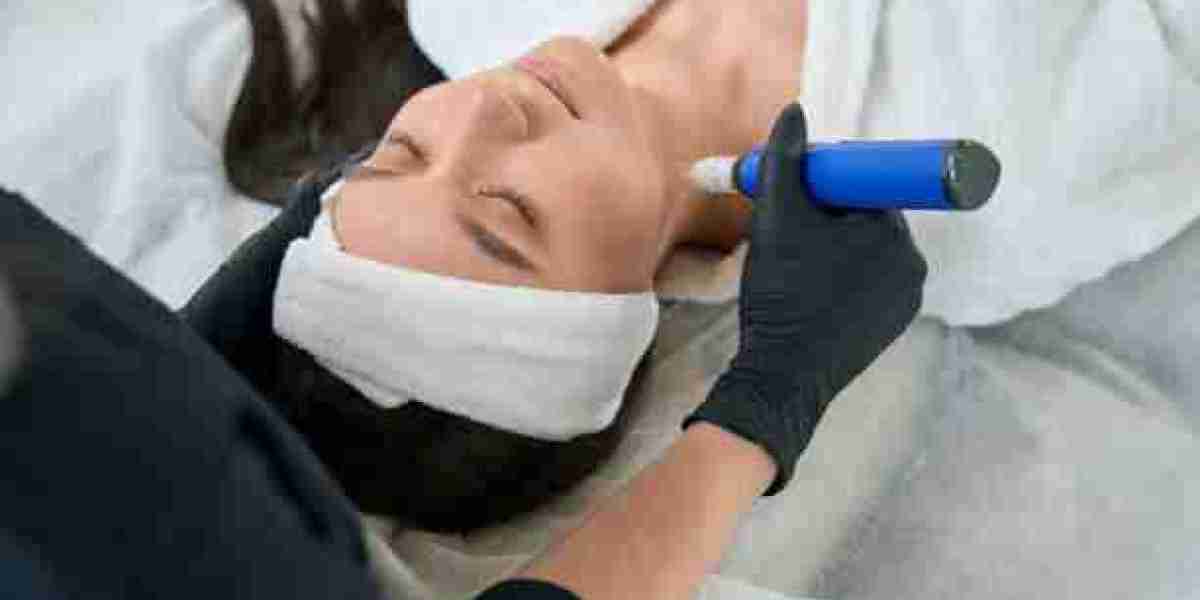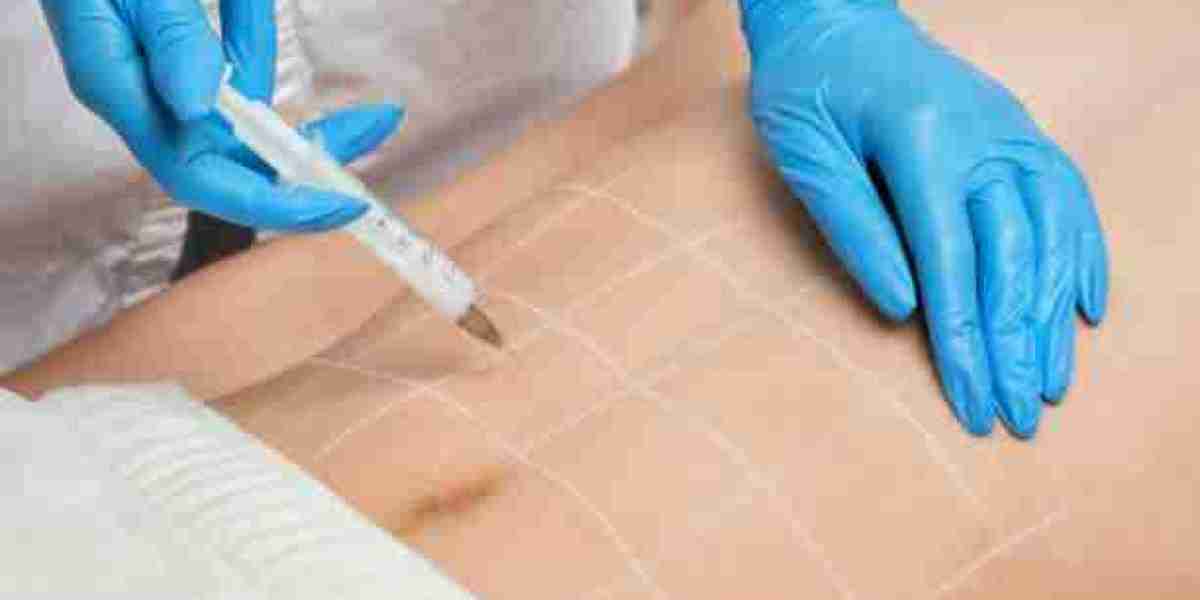In the world of non-invasive skincare treatments, microneedling has quickly gained a solid reputation for delivering visible results with minimal downtime. Whether you're dealing with acne scars, wrinkles, or dull skin, microneedling provides a solution that’s both effective and accessible. Among the various microneedling devices, the Derma pen has emerged as one of the most advanced and precise tools, offering targeted rejuvenation with minimal side effects.
What Is the Derma pen?
The Derma pen is a state-of-the-art microneedling device designed to stimulate the skin’s natural healing process. Unlike traditional microneedling rollers, which use a manual approach and often cause more trauma to the skin, the Derma pen employs automated vibrating technology with fine, adjustable needles that penetrate the skin vertically. This allows for controlled micro-injuries, which trigger the body’s collagen and elastin production.
How It Differs from Traditional Rollers
Traditional microneedling rollers use a fixed needle length and apply pressure in a rolling motion, which can tug or tear the skin. The Derma pen, on the other hand, uses a vertical stamping method that reduces epidermal damage and provides more precise targeting of treatment areas. The adjustable needle depth also allows practitioners to tailor the procedure based on the skin type and condition being treated.
The Science of Collagen Induction Therapy
Microneedling with the Derma pen falls under a treatment category known as Collagen Induction Therapy (CIT). When the skin experiences controlled micro-injuries, it naturally initiates a repair response. This response involves the release of growth factors and the creation of new collagen and elastin, the building blocks of firm, youthful skin.
Phases of Skin Healing
The body responds in three key phases:
Inflammation Phase: Microchannels created by the Derma pen stimulate an immune response, increasing blood flow and removing debris.
Proliferation Phase: Fibroblasts produce new collagen and extracellular matrix.
Remodeling Phase: Over the next several weeks, the newly formed tissue matures, making the skin firmer and smoother.
This cellular activity is what leads to long-lasting skin rejuvenation, reduced scarring, and even tone.
What Conditions Can the Derma Pen Treat?
The versatility of the Derma pen is one of its biggest advantages. It’s not limited to one type of skin issue but is effective for a wide range of concerns, including:
Acne Scars
One of the most common reasons people seek microneedling is to reduce the appearance of acne scars. The micro-injuries help break down old scar tissue and stimulate new skin formation.
Fine Lines and Wrinkles
As we age, our skin loses elasticity and collagen. The Derma pen helps reverse these signs by jump-starting collagen production and tightening the skin.
Hyperpigmentation and Melasma
By encouraging cellular turnover and disrupting melanin clusters, microneedling with the Derma pen can reduce dark spots and patches, resulting in a brighter, more even complexion.
Enlarged Pores and Uneven Texture
The skin’s texture and pore size improve as collagen builds up beneath the surface, giving a smoother and refined appearance over time.
Why the Derma Pen Stands Out
The Derma pen’s digital control and needle precision make it ideal for hard-to-reach areas like around the nose and eyes. Its sterile, single-use cartridges also reduce the risk of infection and ensure a hygienic experience.
Adjustable Depth for Targeted Treatment
Different skin concerns require different levels of penetration. The Derma pen offers adjustable needle depths (typically 0.25mm to 2.5mm), enabling personalized treatment. For example, delicate areas like the under-eye region may only need 0.25mm, while deeper scars may require 1.5mm or more.
Consistency in Results
Because the Derma pen delivers uniform punctures at high speed, the results are consistent across the treated area—something not always achievable with manual rollers.
The Ideal Candidate for Derma Pen Treatment
Anyone looking for smoother, firmer, and more radiant skin may benefit from the Derma pen. It works well on all skin tones and types and is especially valuable for people who want a safe, non-surgical method to improve their complexion.
However, individuals with active infections, severe skin conditions, or who are pregnant may be advised to postpone treatment until a later time. Consulting a certified professional before undergoing treatment is essential.
Pre-Treatment and Post-Treatment Considerations
Before Your Session
Prepping your skin can help you get the most out of your Derma pen session. Typically, this involves:
Avoiding sun exposure and tanning beds
Discontinuing use of retinol or acids 3–5 days prior
Cleansing the skin thoroughly before the procedure
Aftercare Essentials
Post-procedure care ensures optimal healing. You should:
Use a gentle, hydrating cleanser and avoid makeup for at least 24 hours
Apply a calming serum or hyaluronic acid
Avoid direct sun and always use SPF
Minor redness and swelling are common for the first day or two and usually subside quickly.
Expected Results and Treatment Timeline
Noticeable improvements can be seen as early as the first week, but optimal results usually take a few sessions spaced about 4–6 weeks apart. The skin continues to improve over several months due to ongoing collagen remodeling.
Long-Term Benefits
When used regularly, the Derma pen can:
Maintain youthful skin texture
Prevent early signs of aging
Minimize existing damage and scarring
Consistency is key to seeing long-term transformation.
Combining the Derma Pen with Other Treatments
For even greater results, many professionals recommend combining the Derma pen with other skincare treatments, such as:
PRP (Platelet-Rich Plasma): Enhances healing and collagen production
Topical Serums: Helps active ingredients penetrate deeper
Chemical Peels: For added exfoliation and brightening
These combinations can be powerful when tailored to individual skin needs.
? Frequently Asked Questions
❓ What is the downtime after a Derma pen session?
Most people experience mild redness for 24–48 hours, similar to a sunburn. You can resume normal activities quickly, but it’s important to avoid makeup and sun exposure immediately after.
❓ Is the Derma pen painful?
The procedure is generally well-tolerated. A topical numbing cream is applied beforehand, so discomfort is minimal. Some areas may feel more sensitive than others.
❓ How many sessions of Derma pen are needed for acne scars?
While you may notice improvement after one session, 3–6 sessions spaced a month apart are typically recommended for deeper scars to see optimal results.
❓ Can I do Derma pen treatments at home?
Home-use versions exist, but professional treatments are much safer and more effective. At-home devices can increase the risk of infection or improper technique.
Final Thoughts
The Derma pen isn’t just another skincare trend—it’s a scientifically backed solution that delivers real, lasting change. Its ability to activate your skin’s natural healing response makes it a go-to treatment for a wide range of skin concerns. From collagen stimulation to scar reduction, the Derma pen brings clinical-grade results without the need for invasive procedures.



